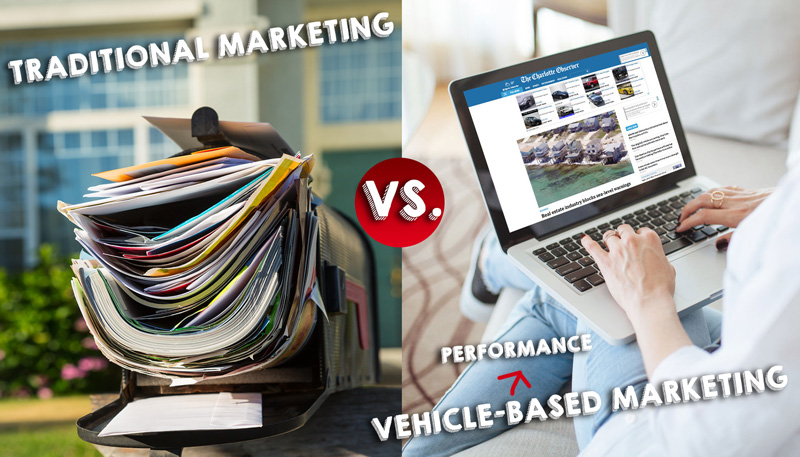
Is Your Dealership Declining in Market Share and Profitability?
As I travel the country working with dealerships, I continue to hear a similar concern: New vehicles sales are slowing, and margins are tightening. Their concern is supported by NADA data. In the first 6 months of 2018 the average dealership sold 14 less units, and went from a net profit loss of -$396 per unit, to a loss of -$560 a unit. In less than a year, the average dealership is losing an additional $164 per new unit sold. The good news for most dealerships is the net profit per used vehicle was steady at $114 per unit sold. Just kidding about that being good news.
The overall retail automotive industry sales performance was solid with over 17 million vehicles sold in 2017. There have been a couple of slower months in 2018, but sales are still on pace to hit the 17 million target.
Dealerships are selling vehicles, they just aren’t making money on the actual sale. To be successful in today’s “internet shopping” and “race to the bottom pricing” environment, dealers need to manage and operate their business similar to King Camp Gillette. For those of you that don’t remember the King, he was famous and credited for inventing the razor and blades business model. Basically, he sold the razor cheaply to increase the sale of his blades.
I’m not advocating giving cars away, I believe dealerships should strive to make a healthy gross profit. What I am suggesting is, for dealerships to stay profitable, they must be great operators. For example, great operators know product mix is critical. They understand that car sales are down 10% in 2018, while light duty trucks are up about 10% and small SUVs are up 27%. Having the right new car inventory is very important to hitting your new vehicle sales objectives.
Inventory
Data supports that the used car department is an important profit center and the most important part of the retail operation. However, I continue to see dealerships with a 5 to 1 mix of new to used inventory. The goal should be a target of 1-to-1 used to new vehicle sales ratio. That is not achievable if the dealership isn’t stocking enough preowned inventory and creating a culture of emphasizing used car sales. Earlier I mentioned the new car sales target in 2018 is 17 million; however, in 2017 there was over twice that number (39 million) of used cars sold. Great operators realize there is a vast opportunity to compete for a broader share of the used car market.
F&I
Good operators reorganize having the right F&I process and supporting management team is now more critical than ever. Customers are working with more information and negotiating more diligently than ever to get the best deal. Dealers need to adopt the mentality to help the customer and to ensure they leave happy and feeling good about the transaction. The key is for F&I managers to sell the value of their products and to see more of them. Many great operators have implemented a menu approach to their F&I process.
Parts and Services
Great operators realize running your parts and service departments like sales organizations is a key to staying profitable. This doesn’t mean being a pushy salesperson, but by building trust and reminding customers that you are the expert and you have the knowledge to help them. The service experience should be tailored to the customer’s needs. Once you built trust, you have earned the right to upsell other products and services. Always thank the customer and help them remember how easy it is to do their service business with you.
The parts department makes a significant contribution to overall dealerships revenue and profit. Parts departments must balance the importance of rapid response to customer and service department needs with the cost and profit impact of retaining excessive stock. It’s important to optimize parts inventory when it comes to hidden profit levers at the dealership.
Expenses
Good operators know that managing expenses is the only way to make your dealership profitable. Dealers need to manage their expenses from their financial statement. This will allow them to compare their sales, cost of sales, gross profit and all their expenses.
Advertising is essential when you are operating a dealership, but managing advertising expenses effectively is another important factor for the success and profitability of a dealership. NADA data indicates that total franchised dealership advertising surpassed $4.5 billion in the first six (6) months of 2018. That equates to $642 per new vehicle retailed.
Henry Ford once said, “A man who stops advertising to save money, is like a man who stops the clock to save time.”
As an adman myself, I agree completely with this quote. Actually, this quote is in the footer of all my emails. Good operators know they must advertise to promote their brand, inventory and specials to sell vehicles; however, when times are tough, and sales are fledgling, dealerships get tempted to cut back on their advertising budget. As prudent and practical as that sounds, it could damage short term gains and squander longer term sales. If you think about it, the whole point of spending money on marketing is to bring leads into your dealership.
I can understand the conservative mindset in times when sales are down, but you have to give dealership a chance at success, especially if you consider that most of your competitors are probably doing the same. But if you are going to eliminate certain advertising expenses, it’s best to make the right choices.
When analyzing your expenses and deciding what to cut, here’s a few tips to assist with the process whilst ensuring that you still give yourself the best possible chance of bringing in the sales.
1. Never, ever cut back on digital marketing. I realize this tip is self-serving because I am a digital marketer, but the truth is, the internet is where customers go when they are ready to shop and buy a vehicle. Still to this day the internet is grossly underestimated in vehicle sales.
Google released their Vehicle Shopper Path to Purchase Study in September 2013 which determined there are about 24 touchpoints that stand between the consumer’s initial car-shopping phase and a visit to your dealership lot; 19 of them are digital. And since their study was published 5 years ago, the growth in mobile search traffic is off the charts.
According to Cox Automotive’s 2018 Car Buyer Journey study, auto shoppers are spending less time in-market and 60% of their time shopping and buying online. When researching online, new buyers most often start at a third-party site and end at a dealer website, while used buyers
often start and end at third-party sites. Regardless of the method that influenced the shopper to contact the dealership, half of all car buyers just walk-in.
Using digital marketing tactics are the most cost-effective way to market your dealership. Digital marketing is much easier to measure, and by using analytics you can take the guess work out of determining whether your marketing is actually working.
Dealers need to attack the reality of the industry to discover how people are really shopping and buying cars. Everyone is shopping the internet, mostly through their mobile devices. Before any dealership can sell a car, truck or SUV they must get the attention of the shopper. Then and only then, will dealerships have an opportunity to sell the vehicle.
2. Analyze the effectiveness of traditional advertising. Why is any dealership wasting budget and still advertising on radio? Compared to print or television, radio is relatively less expensive, but you still have production costs. Of course, whether or not radio advertising is successful depends entirely on whether or not your ads are heard. Radio ads are also ephemeral: you hear them, and then it is gone. Many listeners also change the station during commercials.
Some markets are made up of people who do not own cars or regularly drive to work, so their exposure to radio is limited. Meanwhile, cities like Chicago are comprised of an audience that commutes to work, making them far more likely to hear your advertisements; however, there are over 80 plus radio stations in Chicago and many other ways to stream entertainment like SiriusXM, Spotify and Pandora.
When you purchase billboard space or place an ad in a magazine, you’re taking a shot in the dark that this messaging will reach its intended audience. Drivers aren’t looking at your bill board ads, they are barely watching the road because some (bad) drivers are looking at their phone.
One of the primary disadvantages of traditional marketing is that the results are not easily measured, and in many cases cannot be measured at all. In most cases, traditional marketing is also more costly than digital marketing. And perhaps the biggest disadvantage today is that traditional marketing is static which means there is no way to interact with the audience. It’s more like you are throwing information in front of people and hoping that they decide to act.
The consumer’s attention has left the old media and moved to the new media. A great way to lower expenses is to dramatically reduce the amount of budget you are spending on traditional media and allocate part of the savings to Facebook and Instagram (see next bullet point).
3. You are not spending enough money on Facebook and Instagram advertising. For the most part, dealerships are only spending a few hundred dollars every month advertising on Facebook and Instagram. Many dealers don’t think it’s effective because they can’t measure the ROI of Facebook and Instagram but they continue to pour money into traditional advertising.
While it’s definitely true that Instagram attracts a higher percentage of younger users, a lot of dealerships haven’t kept up with how fast Instagram is growing. As Facebook ads can be shown on Instagram it means there is no extra effort required to include Instagram in your marketing mix.
Both platforms have gigantic audiences, ridiculous attention and their ad products are way underpriced compared to print, radio, television and even Google AdWords. Dealers need to seize this opportunity and allocate more of their advertising budget to grab the attention of auto shoppers on “Instabook”. The time is now to take advantage of this undervalued advertising opportunity.
Summary
The truth is, many dealerships will be selling fewer cars in the coming years. With the arrival of autonomous driving vehicles, ride sharing companies and more people moving into cities, the need to own a vehicle will decline. Fewer cars will be needed and less will be sold.
One assumption drawn from a declining market share is that dealerships face two strategic options: fight to increase their share or sell the dealership to a consolidator (large dealer group). But that’s not always the case. Good operating dealerships with a lower market share can consistently outperform their larger competitor that does not manage their operation and expenses effectively.
Running a dealership in today’s changing environment means you face many unique and distinct challenges. But there are also some serious advantages. Speed, flexibility and ability to change are hallmarks of the best run dealerships. Great operators that leverage those capabilities will either increase their market share, profitability or possibly both.






